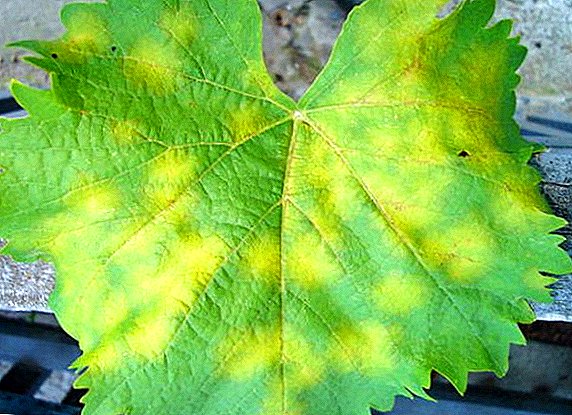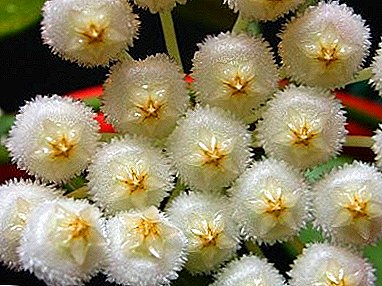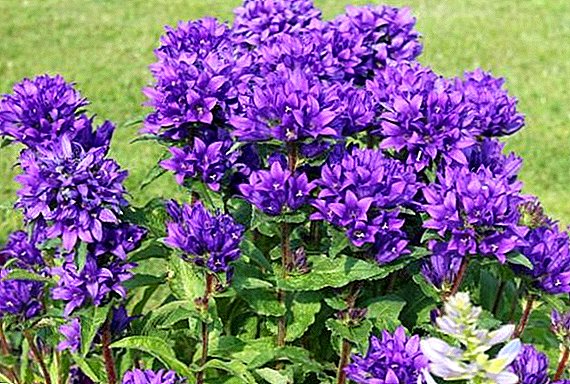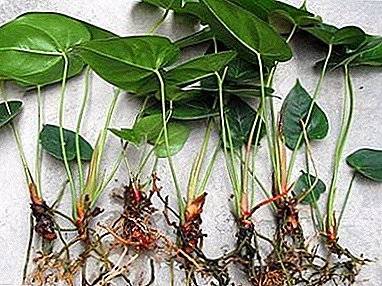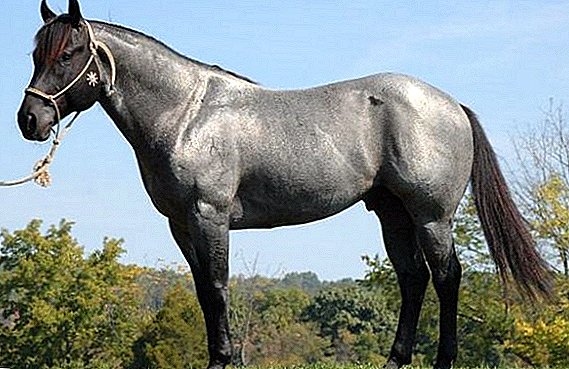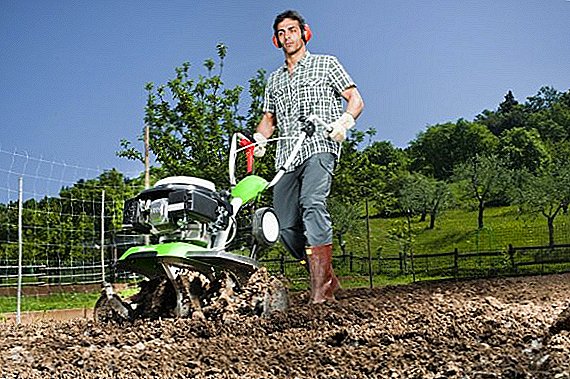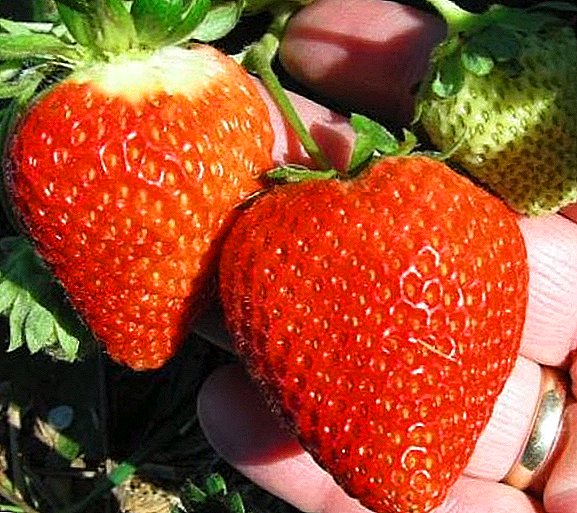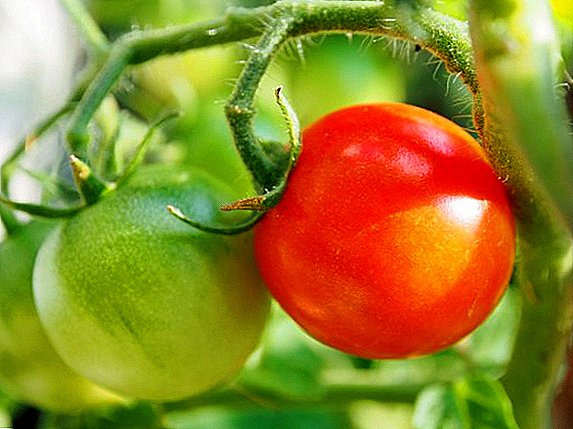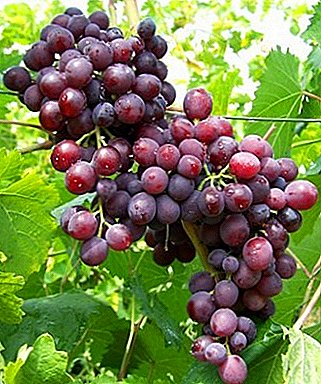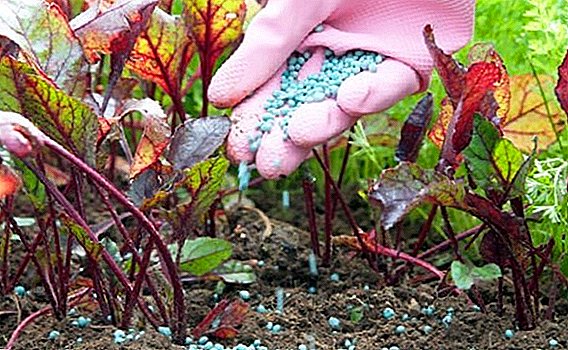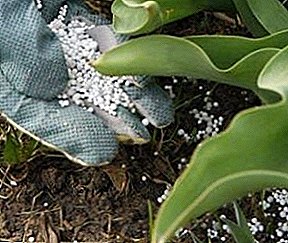 For proper development, plants need vital mineral elements contained in the soil, in particular, potassium and phosphorus. They, along with nitrogen, form the basis of nutrition of crops. It is not surprising that, over time, the number of such elements in the ground inevitably decreases, so a person has two options - to develop new lands or restore the fertility of existing ones by artificially adding the missing substances to them.
For proper development, plants need vital mineral elements contained in the soil, in particular, potassium and phosphorus. They, along with nitrogen, form the basis of nutrition of crops. It is not surprising that, over time, the number of such elements in the ground inevitably decreases, so a person has two options - to develop new lands or restore the fertility of existing ones by artificially adding the missing substances to them.
It is quite clear that in the modern world, the first path is inadmissible luxury. So, the application of mineral fertilizers to the soil (mainly potash and phosphorus, as well as nitrogen) is an integral element of agricultural technology for both large farms and for each individual summer resident who planted vegetables and fruits in his garden.
Mineral fertilizers
As you know, fertilizers are divided into organic and mineral.
Important! Organic fertilizers, as their name implies, are the result of various processes taking place in living organisms, a natural product produced by nature itself. For example, organic fertilizers are peat, silt, tree bark, sawdust, manure, compost, bird droppings, etc. Mineral fertilizers are the squeezing of certain chemicals (inorganic compounds) necessary for plant activity created by people at specialized enterprises. .Organic fertilizers, of course, are much more valuable than mineral fertilizers, since they are absolutely safe and their use requires much less precautions (it is difficult to spoil the soil with organic matter). But, unfortunately, the number of such fertilizers is limited, since for their production it is necessary to go through a certain natural cycle.
That is why modern agricultural technology involves the widespread use of mineral fertilizers, although handling them requires certain knowledge both in terms of the allowable amount of their application to the soil, and in relation to the time of year when it needs to be done (for example, mineral fertilizers containing chlorine are not recommended to be applied to the soil in spring - it may cause damage to plants planted on such soil). 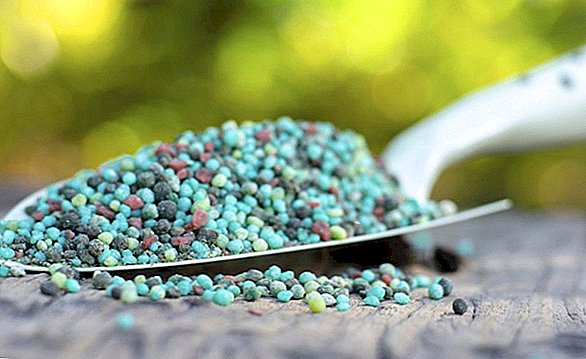 Mineral fertilizers are simple and complex. As it was said, for normal development, plants need several basic elements. Mixing them in the required proportions, they receive complex fertilizers, while simple ones represent each individual element, and the farmer is given the opportunity to independently choose what and when to feed the inhabitants of their beds.
Mineral fertilizers are simple and complex. As it was said, for normal development, plants need several basic elements. Mixing them in the required proportions, they receive complex fertilizers, while simple ones represent each individual element, and the farmer is given the opportunity to independently choose what and when to feed the inhabitants of their beds.
It is important to know that, in contrast to organic fertilizers, which can be easily added periodically to the earth for a general increase in its fertility, the use of mineral fertilizers implies the presence of at least the most general ideas about the basic parameters of the soil. So, it is necessary to take into account which crops and for how long it grew on it and which ones are planned to be planted (different crops have different needs for certain elements), what are the mineral composition and structure of the soil, etc. 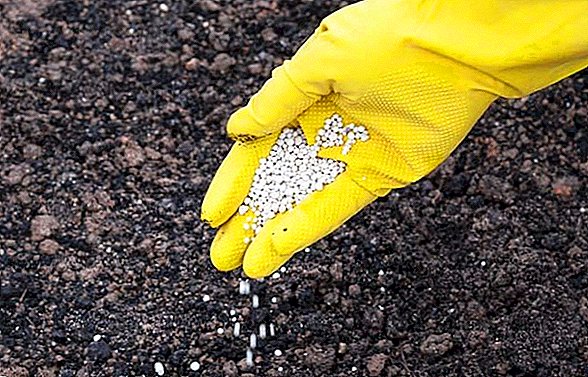 On which mineral additives will be applied to the soil, when and in what proportions it will be done, depends largely on how exactly the crops planted on such soil will develop, for example, whether their growth will be directed towards the formation of green mass or the formation of large and juicy fruits. So mindless watering the beds purchased in the nearest supermarket "talker" - an unacceptable mistake!
On which mineral additives will be applied to the soil, when and in what proportions it will be done, depends largely on how exactly the crops planted on such soil will develop, for example, whether their growth will be directed towards the formation of green mass or the formation of large and juicy fruits. So mindless watering the beds purchased in the nearest supermarket "talker" - an unacceptable mistake!
In particular, phosphate-potash fertilizers (sometimes they are abbreviated as PKU) are necessary to ensure the growth of your crops. However, as is already clear from the name, a feature of such compounds is the absence of nitrogen in them, which especially actively stimulates the formation of the green mass of plants.
Thus, the use of PKU is a great way to direct efforts to budding, flowering and the formation of the fruits of a particular crop, if you need a crop, rather than a huge and lush bush. What fertilizers belong to this group, we will understand. As was said, phosphate-potassium fertilizers can be complex (for example, Agrophoska is one of those - it contains no nitrogen, only phosphorus and potassium) and simplewhen the main part of a substance is a certain component. In the latter case, we mix the "phosphoric-potassium" cocktail independently, depending on which element of his garden or garden has the greatest need.
Potash group
Potassium is "responsible" for maintaining the water balance in the plant's body. This element allows you to fully use the water that culture can take from the environment. With a lack of potassium in the dry period, the plant can dry out, wrinkle and die. In addition, potassium enhances the immunity of crops and their ability to resist many pests, and the crop makes it more fragrant.
Important! Excess potassium is dangerous because it blocks the entry of nitrogen into the plant's organism and, moreover, according to the principle “there is medicine in the spoon, the poison in the cup” does not increase, but, on the contrary, weakens the immune system.There are a lot of potash fertilizers, we will focus only on some of them. Perhaps the most important thing to consider when choosing is the presence of chlorine fertilizer in the composition, since it is not a very good substance for the soil, it requires adherence to special rules when used.
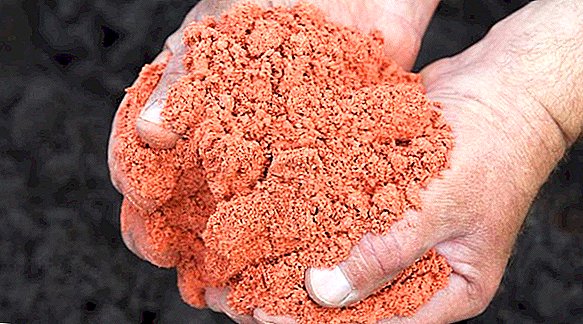
Potassium chloride
The simplest example is potassium chloride. This is perhaps the most popular and affordable potash fertilizer, which contains chlorine (about 40%). Most vegetables react very badly to this element, so cabbage, cucumbers, eggplants, tomatoes, peppers, legumes, and melons, which are particularly in need of potassium, are better provided with this element at the expense of other fertilizers of the group. At the same time, spinach and celery do not belong to chlorophobic cultures, therefore this composition is quite suitable for them.  Externally, potassium chloride looks like a crystalline pink powder that absorbs water very easily, which causes it to become caked when stored improperly (as such crystals dissolve in water much worse).
Externally, potassium chloride looks like a crystalline pink powder that absorbs water very easily, which causes it to become caked when stored improperly (as such crystals dissolve in water much worse).
Apply potassium chloride in the fall, then the chlorine contained in it will be washed out of the soil, and by spring it is possible to plant the planned crops without fear on the bed.
Important! Potassium chloride greatly increases the acidity of the soil, so before using it it is necessary to determine the pH level in your area.On heavy soils, this fertilizer is not used, in addition, under any circumstances, an overdose of potassium chloride is unacceptable.
Potassium sulfate
Potassium sulfate, also known as potassium sulfate, is also a water-soluble crystal, but gray, not pink. Potassium in this fertilizer contains about 50%, which makes it very valuable and popular.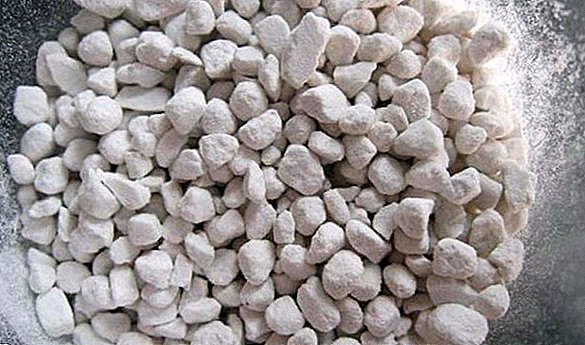 In addition, the advantages of this type of potash fertilizer include the fact that it:
In addition, the advantages of this type of potash fertilizer include the fact that it:
- does not contain chlorine harmful to soil;
- besides potassium, it also includes sulfur, magnesium and calcium, which are necessary for plants;
- can be used on virtually any soil;
- has no special restrictions on time of introduction;
- does not cake and does not absorb water, so it can be stored without observing the ideal mode of dryness.
Important! Sulfur tends to increase the shelf life of fruits, and also removes nitrates from them, therefore potassium sulphate, unlike chloride, is an ideal fertilizer for the vegetable group.However, there are two limitations on the use of potassium sulfate. First of all, it cannot be combined with mineral fertilizers containing lime and, secondly, like potassium chloride, this substance increases the level of acid in the soil, therefore it is not suitable for acid soils.
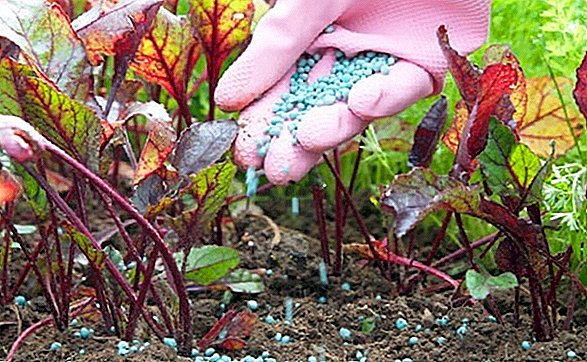
Potassium salt
Potassium salt (also correctly called its potassium) refers to chlorine-containing fertilizers. It contains potassium chloride and sylvinite or Cainite, in which there is even more chlorine than in potassium chloride itself.
Did you know? Potassium salt is still mined in the mines, and this type of activity is very dangerous both for the miners themselves (the salt layers are very fragile and unstable, so landslides on such industries are common), but also for the ecological system as a whole. During mining, sometimes 1 part of potassium has 2-3 parts of insoluble waste, which, when raised to the surface, adversely affect the environment, especially if the wind begins to carry such dust over long distances.Taking into account what has been said regarding the amount of chlorine in the potassium salt, all precautions regarding potassium chloride here should be taken into account with even greater attention. The use of potassium salt in the spring is not recommended categorically, the same applies to the summer period, the only suitable season for this is autumn.
Potassium salt is successfully used for feeding fodder root crops, sugar beet and fruit crops, naturally, provided that overdose is avoided.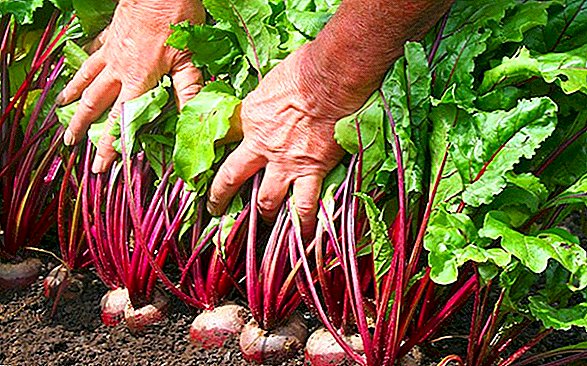 By the way, compared with potassium chloride, this fertilizer will need much more (one and a half times). Potassium salt can be mixed with other additives, but this must be done immediately before laying in the soil.
By the way, compared with potassium chloride, this fertilizer will need much more (one and a half times). Potassium salt can be mixed with other additives, but this must be done immediately before laying in the soil.
Phosphoric group
Phosphate mineral fertilizers are necessary primarily for the development of the root system of plants. In addition, this element regulates their breathing and fills the plant body with energy (as you know, sugar is the source of energy, so a large amount of phosphorus in the soil increases the amount of sugar in crops, as well as starch in potatoes).
Did you know? The history of the discovery of phosphorus is quite funny. In the second half of the seventeenth century, one alchemist from Germany (his name entered science forever, his name was Brandt Henning) in another attempt to find a philosopher's stone tried to isolate gold in the process of synthesizing ordinary human urine. As a result of various manipulations, he managed to get a powdery white substance, glowing in the dark like gold, for which it was immediately accepted by joyful scientists. The author called his discovery phosphorus, which translated from Greek means "carrying the light." Unfortunately, Henning, as we understand, could not convert glowing powder into gold, but this did not prevent an enterprising scientist from starting to sell a new substance at a price higher than the cost of the despicable metal.If the plant is deficient in phosphorus, it is delayed in growth, the fruits ripen late. But an overabundance of this element is also undesirable, since it is dangerous to grow the stem and leaves too fast to the detriment of the future harvest (there will be fewer fruits and they will be small).
Superphosphate
Superphosphate belongs to the most common mineral fertilizers of the phosphate group. In addition to this element, the substance contains nitrogen and, in addition, other components necessary for plants, for example, sulfur, magnesium or calcium, due to which the fertilizer has a complex effect on the plant: it strengthens the root system, improves metabolism, accelerates budding, and Beneficial effect on the immune system. 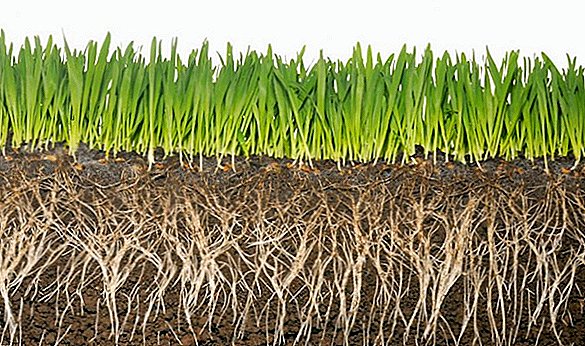 Nevertheless, despite the presence of additional elements, potassium superphosphate belongs to simple phosphate fertilizers, since its main component is phosphorus.
Nevertheless, despite the presence of additional elements, potassium superphosphate belongs to simple phosphate fertilizers, since its main component is phosphorus.
Did you know? In nature, materials containing phosphorus are formed due to the mineralization of the bones of dead animals, but this element is almost never found in its pure form. It was from bone meal in the middle of the nineteenth century in England that the first phosphate mineral fertilizer, superphosphate, was started to be made. To this end, the flour was treated with sulfuric acid. It is interesting that this principle underlies the production of superphosphate throughout the world to the present day.The consistency of the superphosphate can be a powder or granules of any shades of gray, up to black. The powder is more suitable in cases where it is necessary to achieve the fastest possible impact. The substance is easily dissolved in water, but if you bring it into the soil in a dry form, the effect will be very slow or will not occur at all.
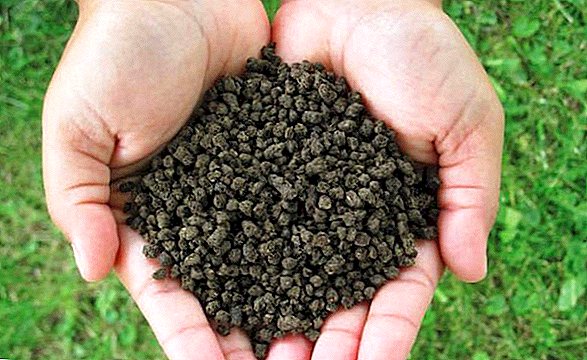 Trees and shrubs react especially badly to the sprinkling of dry superphosphate powder. On the other hand, for such plants, it is preferable to apply phosphate fertilizers closer to the roots, since they practically do not penetrate deep into the soil surface.
Trees and shrubs react especially badly to the sprinkling of dry superphosphate powder. On the other hand, for such plants, it is preferable to apply phosphate fertilizers closer to the roots, since they practically do not penetrate deep into the soil surface.
Bookmark this fertilizer is best carried out in the autumn, but the spring tab is also allowed (and the consumption rate does not depend on the season - usually about 60 grams per square meter).
And again, as with the above potash fertilizers, superphosphate is contraindicated in acidic soils, since the main component of fertilizer is acid. But for sandy, sandy and podzolic soils such dressing is what you need. 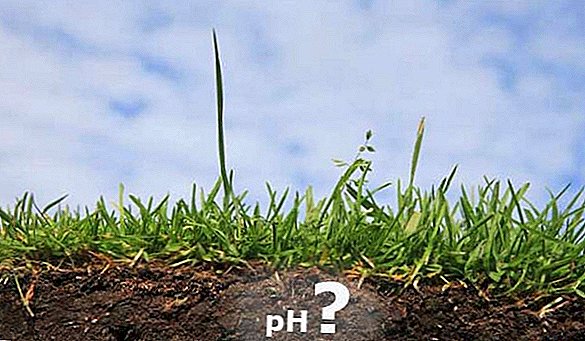 The undoubted advantage of superphosphate is the "long-playing" nature of its effects. The fact is that plants have the ability to take from the soil just as much of the phosphorus they need, while fertilizer applied in excess can last for several years. Thus, an overdose of superphosphate is not a problem that the novice gardener should fear.
The undoubted advantage of superphosphate is the "long-playing" nature of its effects. The fact is that plants have the ability to take from the soil just as much of the phosphorus they need, while fertilizer applied in excess can last for several years. Thus, an overdose of superphosphate is not a problem that the novice gardener should fear.
Double superphosphate
Double superphosphate differs from simple one in that its composition contains much less impurities, while phosphorus, which plants are able to assimilate, is contained in it in two or even three times more. Also double superphosphate includes nitrogen, sulfur, calcium and additionally, in small doses, zinc, copper, boron, molybdenum, manganese and iron. Another advantage of double superphosphate over simple is that it does not clot and does not clump together. This fertilizer is successfully used on any soils and in any season, including for feeding crops during the growing season.
Important! When using double superphosphate to fertilize corn and sunflowers, direct contact of the seeds with fertilizer powder or granules should be avoided, while most vegetable crops will quite favorably react even to mixing their seeds before planting with such granules.When planting vegetables in the ground, as well as planting potatoes, it is enough to add 3 g of this substance to each well. Consumption per square meter - 30-40 g (that is, fertilizers need a half to two times less than a simple superphosphate).
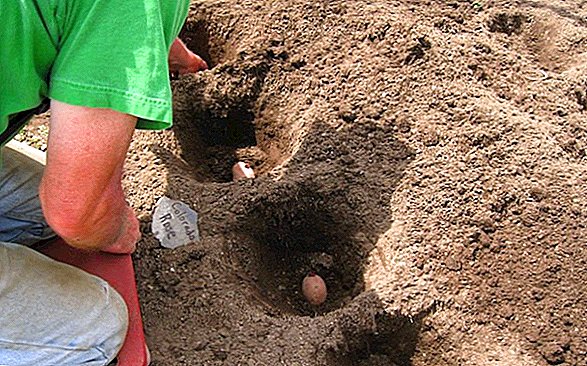 Like the usual superphosphate, this fertilizer does not make sense to scatter on the surface of the soil - it is either buried deep, close to the roots, or diluted in water and used for irrigation. Like potassium sulfate, double superphosphate can not be combined with fertilizers containing lime, as well as with urea (urea), since the active ingredients in these compounds neutralize each other.
Like the usual superphosphate, this fertilizer does not make sense to scatter on the surface of the soil - it is either buried deep, close to the roots, or diluted in water and used for irrigation. Like potassium sulfate, double superphosphate can not be combined with fertilizers containing lime, as well as with urea (urea), since the active ingredients in these compounds neutralize each other.Phosphoric Flour
Phosphoric flour is a gray or brown bulk powder of varying degrees of grinding. The advantage of fertilizer is that it does not cake, does not lose its properties during storage and is not toxic to humans.
Important! Phosphate flour can be called natural fertilizer, since, being extracted from the ground, it practically does not undergo any additional processing, except for ordinary cleaning.
The phosphorus contained in flour is not very easily absorbed by many plants, so the better the ground fertilizer is, the higher its efficiency will be. Like other phosphate fertilizers, phosphate rock can be applied once every few years, but this should be done by deep laying, otherwise phosphorus will not be available for the root system of plants. This powder is almost insoluble in water, therefore it is better to deposit it in a dry form.  If you plan to plant annuals with not very deep roots, you can lay a bookmark in the upper layers of the soil, otherwise more thorough digging is necessary. Remember: the fertilizer will work in the place of its bookmark, and neither above nor below will practically move.
If you plan to plant annuals with not very deep roots, you can lay a bookmark in the upper layers of the soil, otherwise more thorough digging is necessary. Remember: the fertilizer will work in the place of its bookmark, and neither above nor below will practically move.
As a rule, phosphate rock is applied to the soil during the autumn period or in the spring as a pre-seed fertilizer. Per square meter will require from one hundred to three hundred grams of powder. Fertilizer is not suitable for feeding.
Another way to use phosphate rock is to convert manure into compost (the so-called manure composting). In this case, two problems are solved: the phosphorus contained in the flour becomes more accessible to plants, and nitrogen losses are substantially reduced. As a result, both substances are used most efficiently.
Sheep, cow, pork, horse, rabbit manure can be used to fertilize garden and garden crops.
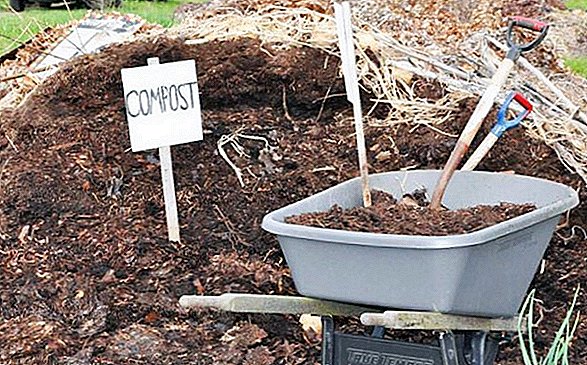 В отличие от большинства описанных выше удобрений, фосфоритная мука идеально подходит для кислотных почв, именно в таком грунте она лучше всего усваивается растениями. Neutral and alkaline soils should be slightly acidified before using such a fertilizer, otherwise the phosphorus will not dissolve and remain in the soil without any effect.
В отличие от большинства описанных выше удобрений, фосфоритная мука идеально подходит для кислотных почв, именно в таком грунте она лучше всего усваивается растениями. Neutral and alkaline soils should be slightly acidified before using such a fertilizer, otherwise the phosphorus will not dissolve and remain in the soil without any effect.
The benefits of using potash phosphate fertilizers
Top dressing of phosphorus-potassium fertilizers is necessary for all plants, providing an increase in yield, both in quantitative and qualitative characteristics, as well as improving the immunity and resistance of the inhabitants of your garden or vegetable garden to various diseases and pests and natural disasters - + freezing winters and dry summer . With a special gratitude grapes, red currant and raspberry bushes, as well as strawberries and tomatoes will treat such feeding. 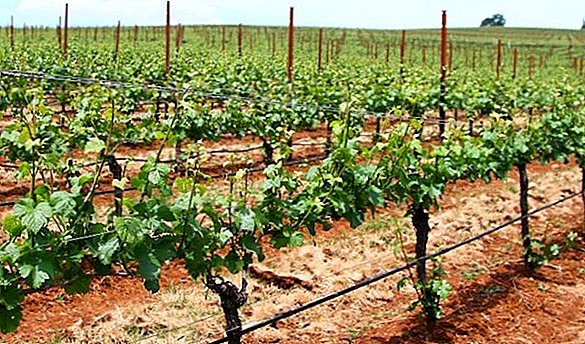 At the same time, the use of such fertilizers has its own characteristics, which are due to the different effects on the plants of the potassium and phosphorus components.
At the same time, the use of such fertilizers has its own characteristics, which are due to the different effects on the plants of the potassium and phosphorus components.
Phosphate fertilizers are made in the spring, if we are talking about annuals, and in the fall, if we feed perennials. Everything is simple: the main benefit of phosphorus is obtained by the roots of the plant, therefore, what grows during one season is better provided with this element just before planting.
For perennial plants, phosphorus in the soil will allow you to "enter the winter" with a strong root system and then get a supply of the necessary element for the whole future season. (as it has been repeatedly stated, phosphorus plants can be taken from the soil gradually and for a very long time). Autumnal introduction of the potash group lays the foundation for good immunity, abundant flowering and fruiting for the next year.
Spreading one tablespoon of phosphate and potash fertilizers (for example, potassium salt and superphosphate) per square meter of tree trunks for trees and shrubs in autumn will provide an excellent result in spring. For strawberries, a mixture of one and a half tablespoons of superphosphate and an incomplete tablespoon of potash salt per square meter. 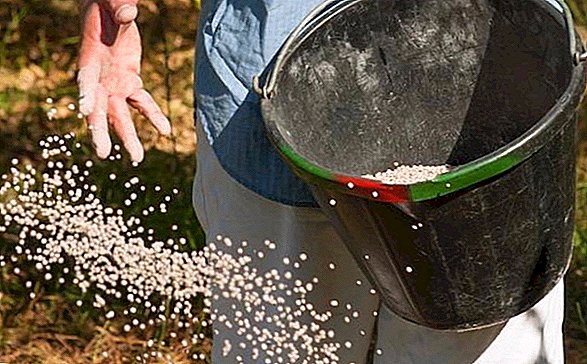 And potassium, and phosphorus can remain in the ground for a long time, and this is a great convenience of such fertilizers. Both elements are usually applied sufficiently deep into the soil, but if the potassium part is usually used as a solution, then phosphorus is also placed directly in the form of powder or granules.
And potassium, and phosphorus can remain in the ground for a long time, and this is a great convenience of such fertilizers. Both elements are usually applied sufficiently deep into the soil, but if the potassium part is usually used as a solution, then phosphorus is also placed directly in the form of powder or granules.
Learn how to feed carrots, cabbage, onions, winter wheat, beets to increase crop yields.
Phosphate-potassium fertilizers are vital for grapes, because potassium, especially in light soil, ensures the resistance of the vine to the winter cold, and phosphorus accelerates the ripening of berries and makes them sweeter. Fertilizers and tomatoes are needed in this group, although they need less phosphorus than potassium. Also, the dose of potassium should be reduced when feeding crops that use their green part, since this element promotes active flowering and fruiting. 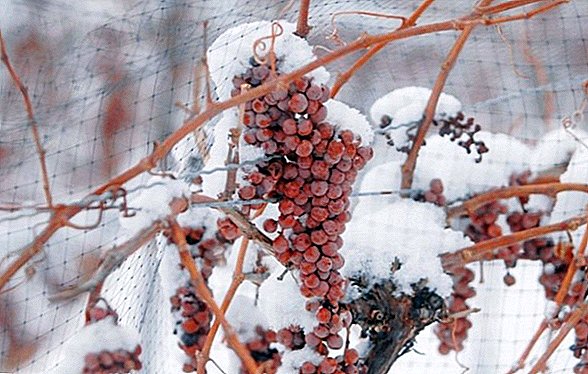 In short, without such mineral elements as potassium and phosphorus, obtaining a good harvest is impossible, however, the choice of top dressing, the dosage and the period of its introduction depend on many factors.
In short, without such mineral elements as potassium and phosphorus, obtaining a good harvest is impossible, however, the choice of top dressing, the dosage and the period of its introduction depend on many factors.
How to determine the lack of elements in the soil
By purchasing a complex fertilizer, you can save time and effort on independently drawing up the correct proportion of vital components for your garden. However, there are cases when the soil already contains an excess of some substance, and additional feeding will not improve the crop, but will only damage it. To avoid such a situation, it is important to be able to determine “by eye” what exactly the plant needs and what it lacks in abundance. Unaccustomed to this, it may seem difficult, but with time a glance at the site will be enough to make a correct "diagnosis." So, if we talk about a lack of potassium, plants at risk are primarily planted on sandstone and super sandstone, peaty ground or in the floodplains of rivers. Eloquently about the problem show the culture, which are in the phase of active growth. Pay attention to the leaves: they become dull, turn yellow or become brown and dry around the edges.
Important! The first sign of potassium deficiency in the soil is the so-called marginal burn on the leaves, especially older ones (with a lack of potassium in the soil, the plant humanely "gives" the deficient element to young shoots at the expense of adults). It manifests itself in red or dry spots along the edge of the sheet plate, while over its entire area there are also types of traces that look like rust.The plant seems to shrink, wrinkle, twist around the edges of the leaves, the streaks seem to go inside the leaf plate, the stem becomes thin and loose, often begins to travel to the ground. Plant growth slows down, buds and flowers develop poorly.
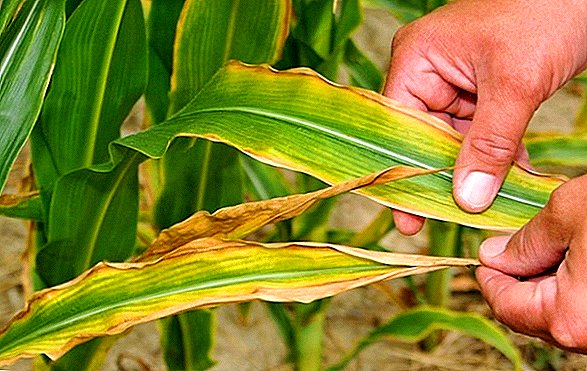 Unfortunately, external signs of potassium starvation appear too late, by this time the plant can receive this element three times less than the norm. Therefore, it is better not to rely on such indicators: just as the main indicators (“checks”) on the dashboard in the car light up, as a rule, when the problem has already become critical, and it is strongly undesirable to bring this to the front; how it begins to appear on the leaves.
Unfortunately, external signs of potassium starvation appear too late, by this time the plant can receive this element three times less than the norm. Therefore, it is better not to rely on such indicators: just as the main indicators (“checks”) on the dashboard in the car light up, as a rule, when the problem has already become critical, and it is strongly undesirable to bring this to the front; how it begins to appear on the leaves.As for phosphorus, its deficiency is even more difficult. The problem can occur on any type of soil, but red soils are particularly susceptible to it, as well as acidic and sod-podzolic soils. The high content of iron and aluminum in the soil is also often accompanied by a lack of phosphorus. 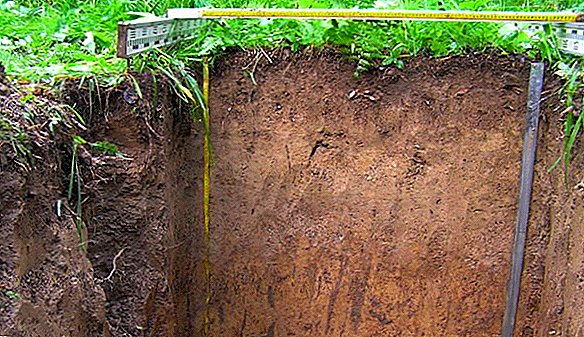 Externally, the lack of phosphorus looks the same as a lack of nitrogen, which is an additional problem in the correct diagnosis. Young plants develop poorly and slowly, thin shoots, small, leaves constantly fall off. Flowers and fruits appear late. And yet there is an indicator: the color of the sheet.
Externally, the lack of phosphorus looks the same as a lack of nitrogen, which is an additional problem in the correct diagnosis. Young plants develop poorly and slowly, thin shoots, small, leaves constantly fall off. Flowers and fruits appear late. And yet there is an indicator: the color of the sheet.
With a lack of phosphorus, the plate becomes dark and dull, and in critical cases, the petioles become reddish or purple. Dries out from a lack of phosphorus, the leaves become dark, while nitrogen starvation is manifested in the lightening of the dry leaf. Like potassium deficiency, phosphorus starvation is better seen in the older parts of the plant than in the young shoots. 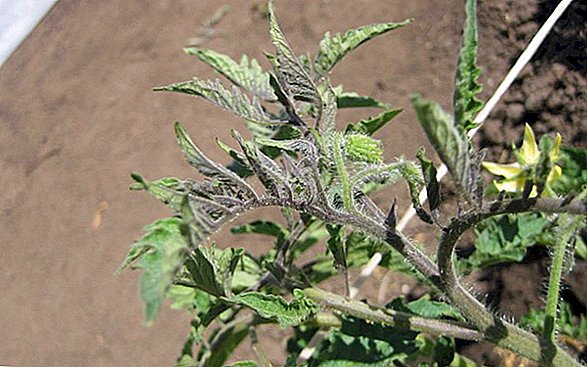 In order for the inhabitants of your garden and vegetable garden to be healthy and delight you with tasty fruits, do not bring their condition to the above signs of a lack of the most important nutrients - potassium and phosphorus. Timely and proper fertilizing, taking into account the characteristics of the soil and the nature of the plants - the key to excellent harvest over the years. And you can get it even if your cottage area is located just a few hundred square meters, and you come there no more than once a week!
In order for the inhabitants of your garden and vegetable garden to be healthy and delight you with tasty fruits, do not bring their condition to the above signs of a lack of the most important nutrients - potassium and phosphorus. Timely and proper fertilizing, taking into account the characteristics of the soil and the nature of the plants - the key to excellent harvest over the years. And you can get it even if your cottage area is located just a few hundred square meters, and you come there no more than once a week!


